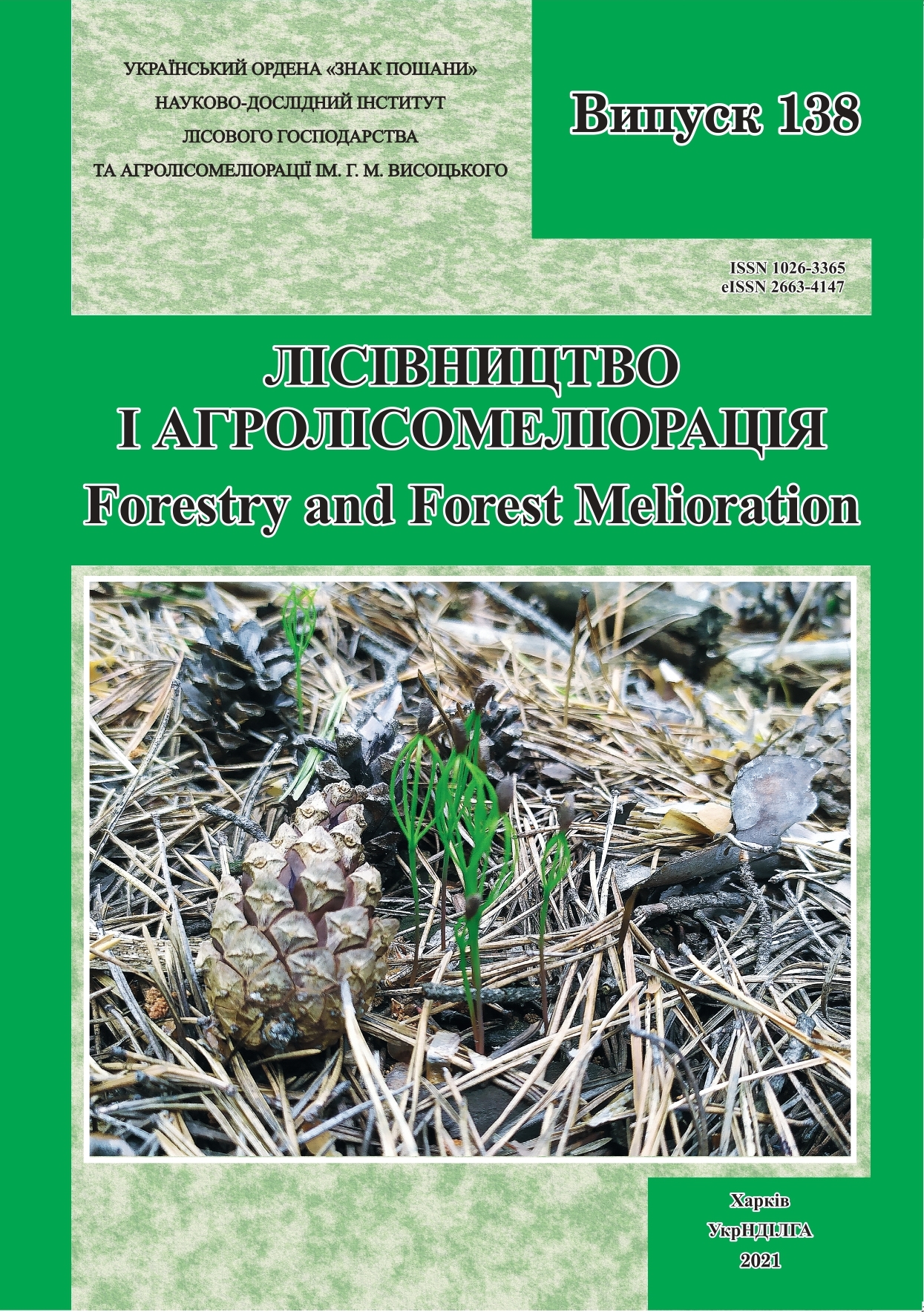Анотація
Наведено результати досліджень агрохімічних показників чорноземів на ріллі й у полезахисних лісових смугах (ПЛС) ДП «Маріупольська ЛНДС» та фермерського господарства с. Новотроїцьке Волноваського району Донецької області (контроль). Вміст гумусу у ґрунтах ПЛС ДП «Маріупольська ЛНДС» є вищим, ніж на ріллі, на 6,06 % і становить у середньому 11,72 %. На контролі вміст гумусу на ріллі й у ПЛС різниться неістотно (середнє значення 6,0 %). Кореляційний зв’язок між вмістом гумусу і віком ПЛС є сильним (r = 0,7; trфакт. ? trтеор). На дослідних об’єктах реакція ґрунтового розчину ріллі становить 6,8–7,75 (рН водний), 5,7–6,8 (рН сольовий), у насадженнях – 6,2–7,75 (рН водний), 5,25–7,0 (рН сольовий). Вміст азоту і калію є більшим у ґрунтах ПЛС, фосфору – на ріллі. Для ґрунтів ПЛС кореляційний зв’язок між вмістом азоту і віком насадження, вмістом гумусу й азоту має середню силу (r = 0,6; trфакт. ? trтеор). Виявлено зворотній кореляційний зв'язок середньої сили між умістом гумусу і рН сольовим у ґрунтах на ріллі (r = 0,5; trфакт. ? trтеор).

Ця робота ліцензується відповідно до Creative Commons Attribution 4.0 International License.
